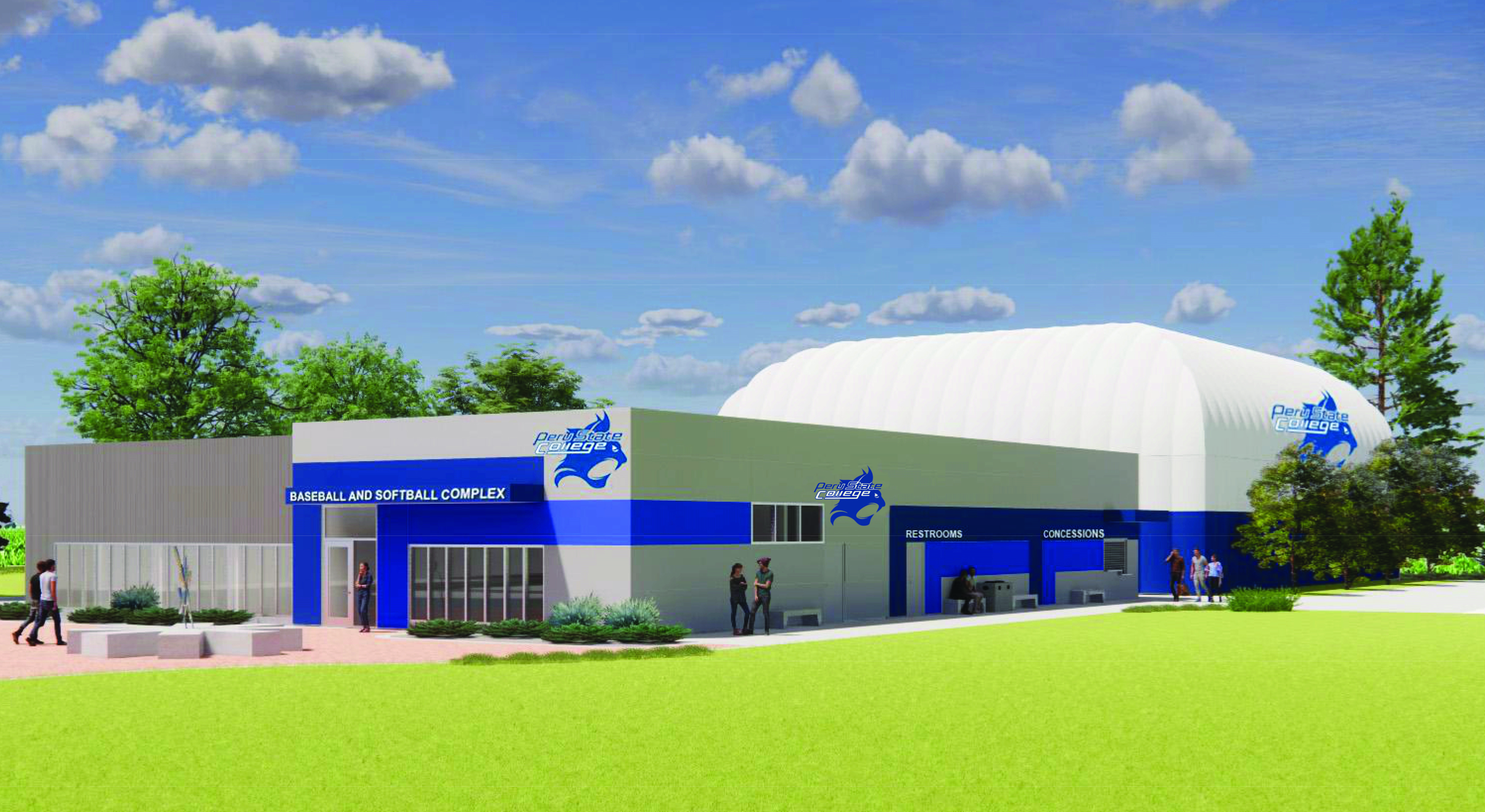Peru, Nebraska – The largest construction project in the history of Nebraska’s First College, both in terms of square footage and investment, has been announced.
Termed “Project ROAR” - Renewed Opportunities for Activity and Recreation - the five-building project will add more than 104,000 square feet of indoor space to the campus, noted Peru State College President, Dr. Michael Evans. That is more than double the square footage of Peru State’s largest building, the Al Wheeler Activity Center.
The price tag, an estimated $14.6 million, is another “biggest in history.” Though tens of millions of dollars have been invested in campus renovations and additions in the past two decades, Project ROAR will yield the first new buildings at Peru in more than 40 years. The Wheeler Center was built in 1979-80.
Project ROAR has already secured $10.6 million – nearly three-fourths of the total - from the State of Nebraska and from college resources, according to President Evans. Alumni and friends will be called upon to gift the remaining $4 million, making ROAR the largest fund drive in Peru State’s 155-year history. “The dedication among our alumni and friends for the success of this college gives me confidence we will succeed in meeting our goal,” Evans said. “The level of passion for this college is not something I’ve seen anywhere else.”
Critical need for space
Project ROAR is, Evans noted, essential to the strength and well-being of Peru State and its students – literally as well as figuratively, Evans noted. “We know we must support our students by promoting regular physical activity,” Evans said. “Getting them up and moving helps their physical health, their mental health, their self-esteem, and their ability to learn in the classroom and interact with others.”
But with the Wheeler Center the only indoor activity space on campus, constraints are significant. With 13 varsity and five junior varsity sports programs vying for time and space in the Wheeler Center, typically starting at 6 a.m., time for recreational activities and for intramural sports is exceedingly tight. “Our facilities are overtaxed,” Evans said. “It’s a challenge for us to offer opportunities to keep our students moving. To get students off their phones and out from behind their computer screens, we need to expand our facilities.”
In a small, rural community with limited opportunities for activities, the need is especially significant, Evans added. ROAR will aid not just student recruitment, but retention, he emphasized. The buildings will bring much-needed improvements to campus. For example, Bobcat baseball and softball fields near the Centennial Complex have no locker rooms, coaches’ offices or training facilities nearby; they even lack modern toilet facilities, relying instead on portable units.
Benefit to athletics, also
Beyond relieving pressure on the Al Wheeler Center and providing recreation space for students, Project ROAR will be a boon to Bobcat Athletics, Evans noted, and might one day allow Peru State to develop additional competitive sports. Officials are finalizing designs, with a goal that construction can begin in Spring 2023. If fundraising and construction goals are met, they could be open as early as Fall 2024.
Three of the buildings will grace the area near the baseball and softball fields at the Centennial Complex south of the main campus. The other two will be built on a practice field north of the Oak Bowl stadium. The largest components are large air-supported, artificially-turfed domes at each site. The multi-purpose venues will allow for more recreational, intramural and club sports activities, and for Bobcat sports teams to practice indoors during the often-inclement weather for which the Midwest is known. Clubs, organizations, and other groups throughout the region will also be able to reserve the facilities for camps, reunions, and other events; there are no comparable resources in southeast Nebraska, Evans noted.
#PeruState155
